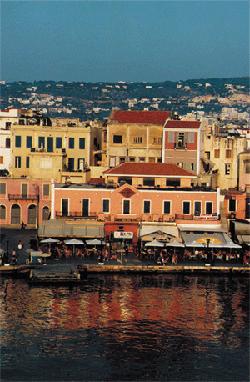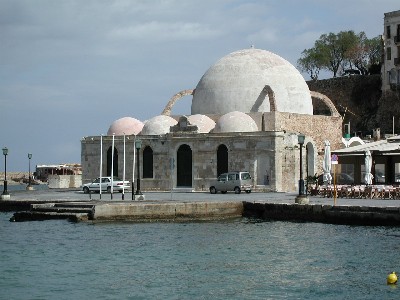 The city's pecking order comprised the following social classes:
The city's pecking order comprised the following social classes:

CHANIA. A Cretan city, which has continuously been inhabited since the early years of the Neolithic era. The first name of the city was Kydonia, and as such it had been referred to until the end of the First Period. During the period of the Venetian occupation (1212-1645), many great works were carried out in the city. The most important works were made for the city's defence (the Wall of the town, ports, dockyards) although other private and public constructions were not of minor significance. The city's Wall had a total length of 3500m. including the jetty. Its breadth was 20m. and it's height, from the surface of Handakas, was 25m from the eastern, southern and western side, the Wall had a ditch of 10m in depth and 50m in breadth. Today the 2/3 of the Wall is preserved in quite a good condition. The reconstruction of the outer part of the Wall started in 1538 under the supervision of the, renowned for his fortifications, engineer Michele Sammichely from Verona, Italy. The old town still maintains many of its Venetian and Turkish monuments with its characteristic Venetian buildings, mosques and minarets. The Venetians had built many dockyards in order to rebuild and service their galleys and to harbor them from extreme weather conditions. In 1601 B. Moro mentions: «there were 17 dockyards in the ports…». Today seven of them are preserved while there are two more at the eastern part of the dock. The city's pecking order comprised the following social classes:
The city's pecking order comprised the following social classes:
The Italians mainly did commerce. The most prominent professions of that time were lawyers, notaries, and judges. People entertained themselves mainly in religious celebrations and feasts. Work started at sunrise and finished at sunset. Their diet mainly consisted of legumes and fish. It's noteworthy that in 1644, a year before the Turks conquered the island, Chania's population was 10401 people.
Rousou Haris Grade 6